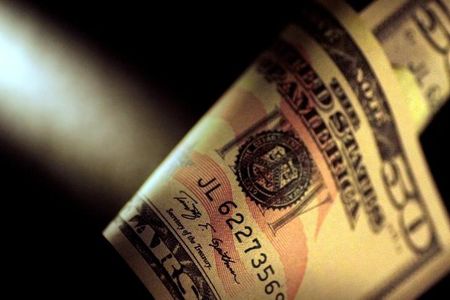Forex
Asia FX advances, dollar little enthused by hot CPI data

Investing.com– Most Asian currencies firmed slightly on Friday, while the dollar fell from near two-month highs even as hot consumer inflation data furthered bets on a smaller interest rate cut by the Federal Reserve.
But most regional currencies were nursing losses in recent sessions as recent U.S. data pointed to interest rates remaining relatively higher for longer.
The South Korean won firmed even as the Bank of Korea cut interest rates and flagged more potential reductions, while the Chinese yuan rose with focus squarely on more fiscal stimulus measures from Beijing.
Dollar muted as markets weigh hot CPI, high jobless claims
The and fell 1% each in Asian trade, retreating from a one-month high hit in overnight trade.
While the dollar initially rallied on a stronger-than-expected inflation reading for September, it tapered its gains after labor data showed a bigger-than-expected increase in weekly jobless claims.
Traders still maintained bets that the Fed will cut interest rates by 25 basis points in November, with showing a 81.3% chance.
But signs of weakness in the labor market are likely to push the Fed into reducing rates consistently in the medium-term, even as inflation remains relatively elevated.
inflation data is due later on Friday and is expected to offer more cues on the world’s biggest economy.
Chinese yuan firm with fiscal stimulus in sight
The Chinese yuan firmed slightly, with the pair falling 0.1%.
Focus was squarely on an upcoming finance ministry briefing, where the government said it will outline plans for fiscal stimulus.
Analysts expect Beijing to outline at least 2 trillion yuan ($283 billion) of fiscal support, with a bulk of the amount being targeted at supporting private consumption.
Saturday’s briefing comes after a briefing on recent monetary stimulus measures largely underwhelmed. Investors also remained doubtful over China’s capacity for more fiscal measures, given the country’s stretched debt levels.
South Korean won firms past BOK rate cut
The South Korean won firmed on Friday, with the pair falling 0.2%.
Strength in the won came even as the BOK by 25 basis points to 3.25%- its first rate cut in over four years.
The central bank left the door open for more easing, as the Korean economy grapples with sluggish growth and cooling inflation.
Broader Asian currencies tread water and were mostly nursing weekly losses, as the dollar headed for a weekly gain.
The Japanese yen’s pair steadied at 148.71 yen, after coming close to 150 yen earlier in the week.
The Australian dollar’s pair added 0.2% after losing ground earlier in the week.
The Indian rupee’s pair remained close to record highs hit above 84 rupees.

 Forex3 years ago
Forex3 years agoForex Today: the dollar is gaining strength amid gloomy sentiment at the start of the Fed’s week

 Forex3 years ago
Forex3 years agoUnbiased review of Pocket Option broker

 Forex3 years ago
Forex3 years agoDollar to pound sterling exchange rate today: Pound plummeted to its lowest since 1985

 Forex3 years ago
Forex3 years agoHow is the Australian dollar doing today?

 Cryptocurrency3 years ago
Cryptocurrency3 years agoWhat happened in the crypto market – current events today

 World3 years ago
World3 years agoWhy are modern video games an art form?

 Commodities3 years ago
Commodities3 years agoCopper continues to fall in price on expectations of lower demand in China

 Economy3 years ago
Economy3 years agoCrude oil tankers double in price due to EU anti-Russian sanctions























